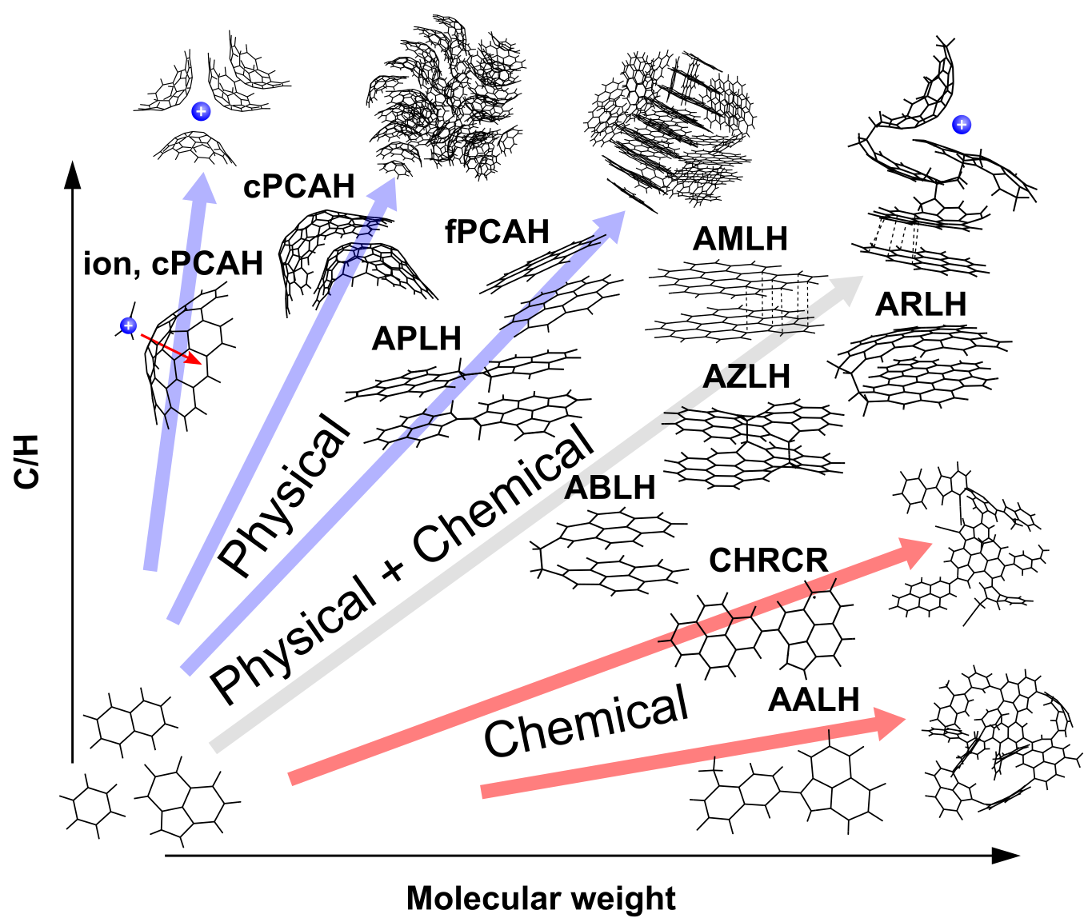Soot inception: Carbonaceous nanoparticle formation in flames
- The review is motivated by efforts to reduce harmful soot emissions and to control the nanostructure and synthesis of carbon black/nanodots.
- The formation of gas-phase precursor aromatics are reviewed identifying PCAH, aromers and clustering PAH.
- The formation of carbonaneous nanoparticles are reviewed focusing on the known chemical and physical mechanisms.
- Mechanisms combining physical and chemical mechanisms are highlighted with localised π-radicals of particular interest.
 The route by which gas-phase molecules in hydrocarbon flames form condensed-phase carbonaceous nanoparticles (incipient soot) is reviewed. These products of incomplete combustion are introduced as particulates and materials revealing both their useful applications and unwanted impacts as pollutants. Significant advances in experimental techniques in the last decade have allowed the gas phase precursors and the transformation from molecules to nanoparticles to be directly observed. These measurements combined with computational techniques allow for various mechanisms known to date to be compared and explored. Questions remain surrounding the various mechanisms that lead to nanoparticle formation. Mechanisms combining physical and chemical routes, so-called physically stabilised soot inception, are highlighted as a possible “middle way”.
The route by which gas-phase molecules in hydrocarbon flames form condensed-phase carbonaceous nanoparticles (incipient soot) is reviewed. These products of incomplete combustion are introduced as particulates and materials revealing both their useful applications and unwanted impacts as pollutants. Significant advances in experimental techniques in the last decade have allowed the gas phase precursors and the transformation from molecules to nanoparticles to be directly observed. These measurements combined with computational techniques allow for various mechanisms known to date to be compared and explored. Questions remain surrounding the various mechanisms that lead to nanoparticle formation. Mechanisms combining physical and chemical routes, so-called physically stabilised soot inception, are highlighted as a possible “middle way”.
- This paper draws from preprint 263: Carbonaceous nanoparticle formation in flames
- Access the article at the publisher: DOI: 10.1016/j.pecs.2021.100956



